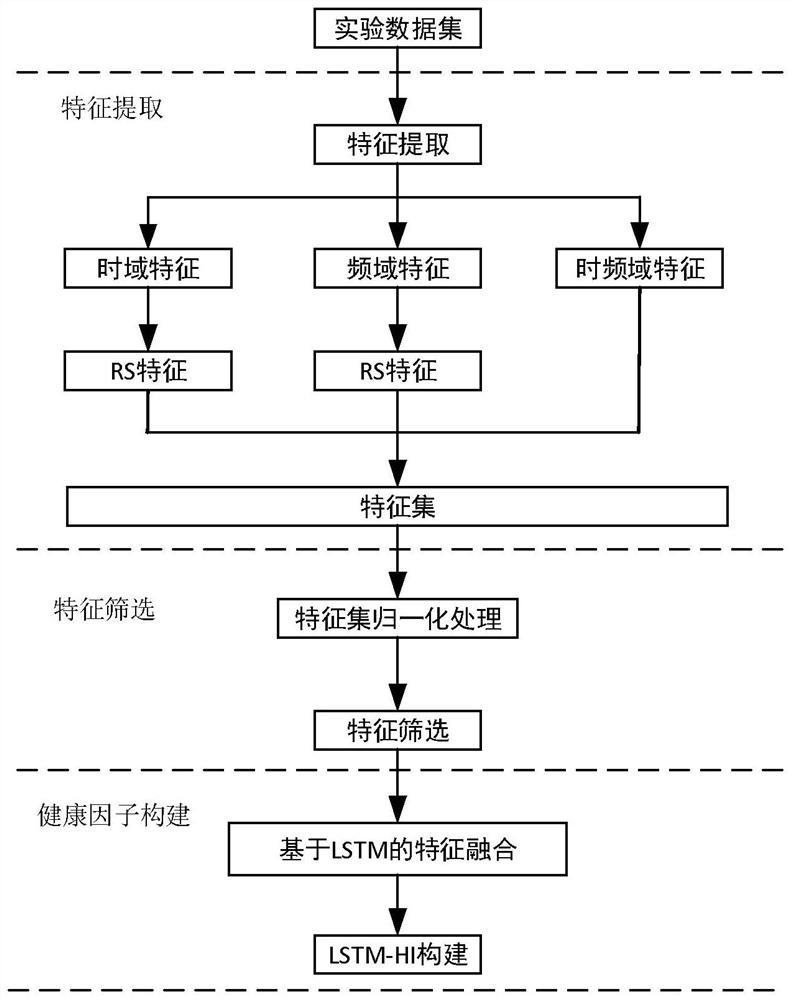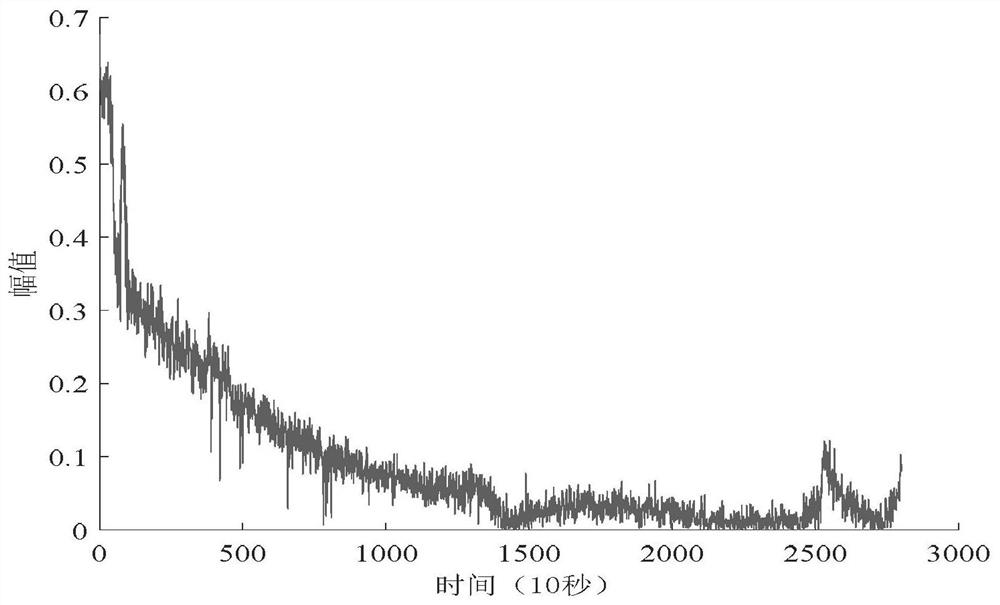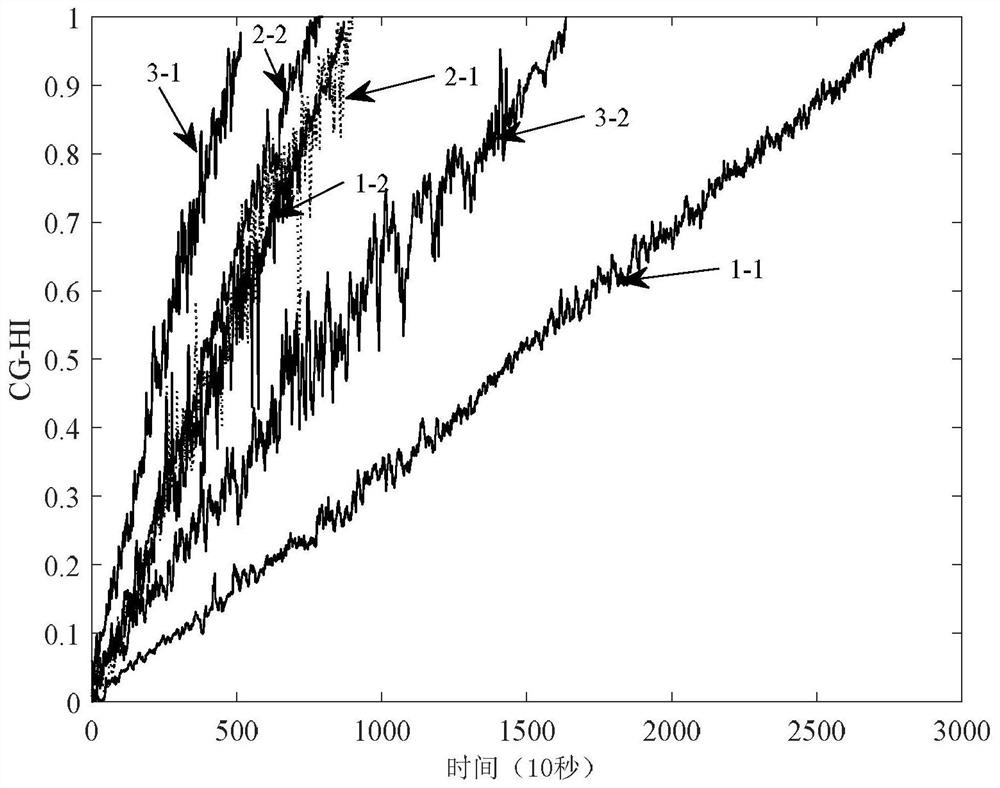Mechanical rotating part performance degradation tracking method based on multi-feature fusion
A technology of multi-feature fusion and rotating parts, which is applied in the performance degradation tracking of mechanical rotating parts, and in the field of performance degradation tracking of mechanical rotating parts based on multi-feature fusion, which can solve the problem that the performance degradation of mechanical rotating parts cannot be fully and accurately described. Problems such as all status information of components, to achieve stable results, improve accuracy, and excellent performance
- Summary
- Abstract
- Description
- Claims
- Application Information
AI Technical Summary
Problems solved by technology
Method used
Image
Examples
specific Embodiment approach 1
[0054] Specific implementation mode one: combine figure 1 Describe this embodiment, a method for tracking performance degradation of mechanical rotating parts based on multi-feature fusion in this embodiment, which includes the following steps:
[0055] Step 1: Obtain the degradation data of mechanical rotating parts;
[0056] Step 2: Extract various features from the original vibration signal of the mechanical rotating parts;
[0057] Step 3: Calculate the correlation, monotonicity, robustness, and comprehensive indicators of the extracted multiple features, and select the 8 features with the highest comprehensive index values to form a sensitive feature data set;
[0058] Step 4: Construct the LSTM network, input the sensitive feature data set screened in step 4 to the LSTM network, and perform multi-feature fusion to obtain the fusion feature LSTM-HI, which is the health factor.
[0059] The goal of this embodiment is to extract a variety of time domain, frequency domai...
specific Embodiment approach 2
[0060] Specific implementation mode two: combination figure 1 Describe this embodiment, the steps of the parametric grid division of the 3D model in step 1 of this embodiment are as follows:
[0061] The method of obtaining the degradation data of the mechanical rotating parts in step 1 is: using multiple acceleration sensors to collect vibration data from the running process of the mechanical rotating parts.
[0062] With this setting, the actual degradation data of mechanical rotating parts can be obtained, which can be used to provide data support for subsequent performance degradation tracking. Other compositions and connections are the same as in the first embodiment.
specific Embodiment approach 3
[0063] Specific implementation mode three: combination figure 1 To illustrate this embodiment, the extraction steps of the original vibration signal in step 2 of this embodiment are as follows:
[0064] Step 21: extracting 11 time-domain features from the vibration signal obtained in step 1;
[0065] Step two and two: extract frequency domain features from the vibration signal obtained in step one;
[0066] Step two and three: calculate the RS feature of the time domain feature and the frequency domain feature, the RS feature represents the similarity measure of the data sequence between the current time and the initial time;
[0067] Step two and four: extract the time-frequency domain features of the vibration signal, and obtain the energy ratio of 8 frequency subbands as time-frequency domain features by performing three-level wavelet packet decomposition on the vibration signal. In addition, extract the approximate entropy and sample entropy from the vibration signal and...
PUM
 Login to View More
Login to View More Abstract
Description
Claims
Application Information
 Login to View More
Login to View More - R&D
- Intellectual Property
- Life Sciences
- Materials
- Tech Scout
- Unparalleled Data Quality
- Higher Quality Content
- 60% Fewer Hallucinations
Browse by: Latest US Patents, China's latest patents, Technical Efficacy Thesaurus, Application Domain, Technology Topic, Popular Technical Reports.
© 2025 PatSnap. All rights reserved.Legal|Privacy policy|Modern Slavery Act Transparency Statement|Sitemap|About US| Contact US: help@patsnap.com



